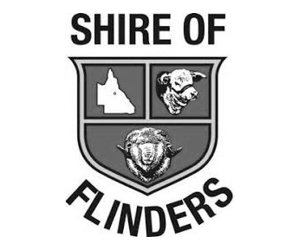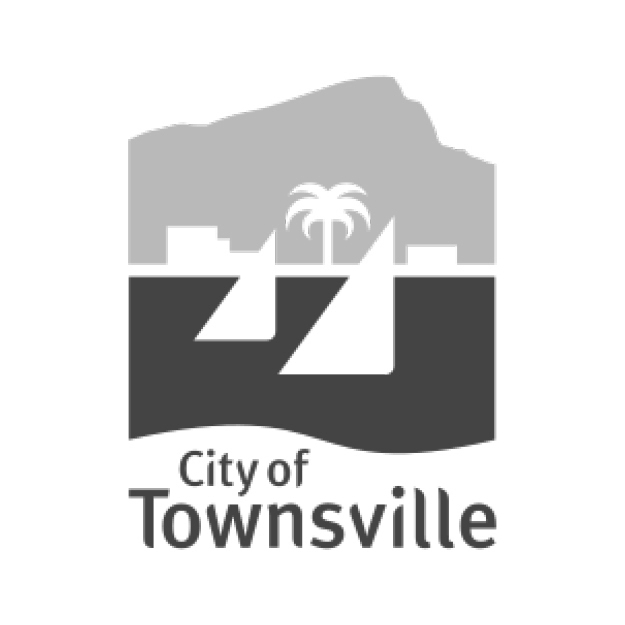How to market to new members - for clubs and not-for-profits
As a sports club, community club, not-for-profit, organisation or association, you know what your main business unit is, your main focus. However, just because you have one main purpose doesn’t mean that you should neglect your other business units that could be growing with a little marketing. It’s important to remember that just because you’re not-for-profit, doesn’t mean “no profit.” You need to remember that you are in competition with other clubs in your area, for people’s valuable attention and time.
KNOW YOUR MARKETING PURPOSE
All marketing includes showcasing your brand to your relevant target audience. But do you know your clubs brand? It all starts with your ‘why.’
Answer these questions about your club to find your brand:
Why do you do what you do?
What is the purpose of your club?
What kind of club are you? Are you community focused or competitive?
Before you start marketing to anyone, your committee needs to be on the same page about these questions and who your club or not-for-profit is. Remember: if you don’t know who you are, how will others understand who you are?
HOW TO GROW YOUR MEMBERSHIP BUSINESS UNIT
In today’s world, Michael and Steve have seen a steady increase in the workshops, webinars and project work related to inclusivity. It’s important for clubs and not-for-profits to work towards an environment that is more inclusive, culturally diverse, and equal for all.
When it comes to marketing to the right people though, you need to make your club exclusive.
Because the hard truth is… your club or not-for-profit, is not for everyone!
A major marketing mistake many people fall for is that they want to market to everyone, especially if they have an email address. Before you start marketing to anyone and after you understand your brand, you need to find your niche target market. When you create a picture of who you want to target, you’re also creating a picture of who you don’t want to target. Because the same reason why you or the next person became a member, is likely not going to be the same reason as it is for another person.
Think about this analogy; a heavy metal musician is most likely not joining an orchestra, therefore, the orchestra will not be marketing to them when they need new members. Just because they're both interested in music, doesn’t mean they're interested in the same way.
The learning; know your audience, so you don’t waste your time on people that aren’t interested.
HOW TO FIND YOUR TARGET AUDIENCE
As we’ve established that your organisation is not for everyone (which is okay!), you need to find those people who are interested in you. To do this you will need to engage with your current members and find out the different reasons why they joined. Talk to the parents of the kids who are playing for the club, and what attracted them to sign up their kids. Also, speak to the committee members, as they are so passionate about the club, they’re willing to invest even more of their valuable time. Find the why in these key stakeholders and you’ll be able to create your target market profile.
From the answers given to you by the stakeholders above, write down your answers to the following questions to find your target market:
What are they like?
What is/are the age range/s of participating members?
Where do they live? (Be specific, i.e., are they close or do they need to travel far?)
What do they like? (they should like what your club is offering, for example, a specific sport, or a team sport, or an individual sport, etc)
What don’t they like? (e.g., if they don't like contact sports and you’re a tennis club, they’re interested in you)
Where do they spend their time?
What are their other interests?
What are their friends and family like?
WHAT DOES YOUR TARGET AUDIENCE WANT
Once you have answered the above questions and you have a profile for your target audience, you then need to understand what your target audience will get out of being involved with your club or not-for-profit.
And we don’t mean getting to play games, or competitions or the trainings, or skills. But what do they want to feel when they are a part of your organisation? And putting feelings into words is difficult for someone you don’t know, so ask yourself… How do I feel about being a part of my club? Does it make you feel happy, excited, or grateful? Do you like being a part of a team and community? Why do you come back week after week, or season after season? Some answers to these questions will resonate with your new members also.
So a final exercise to try, which has proven successful in CPR Group workshops, is calculating out your numbers. Answer the following questions and write your answers down so you can have a clearer understanding of how many new members you can accommodate.
Step 1: How many participating members do you have EXACTLY altogether?
Step 2: What limiting factors do you have?
How many facilities do you have?
How many hours of access do you have?
Any people based limitations? (i.e.How many coaches do you have?)
Step 3: From these limitations, what is the theoretical maximum participating members you can have? You need to be realistic with this number.
Step 4: What is the difference from what we have now to our theoretical maximum number?
Step 5: Do the math of taking your current participating members and your capacity for your facilities and market to those people that are the difference. It could be 50, 100 or 1000 people you need to market to.
Spend your time and connect by focusing on those people who are your niche target audience, not everyone else.
Digital marketing for clubs and not-for-profits
How to use digital marketing effectively for club and not-for-profits
And don’t forget word-of-mouth marketing and how to use it
Establishing your target market is the first step in your marketing strategy, and now that you have a clear picture of the people you want to reach, we now dive into the world of digital marketing, which is how you reach your market.
Before we start about digital marketing, we want to bust some myths.
1. You don’t need an account for every type of social media
Pick the social media platforms that your target audience will use. For clubs and not-for-profits this will usually be Facebook and Instagram due to your market. You can research which social media platforms your target market uses by searching with parts of their demographics (i.e., age ranges, gender etc.).
2. You don’t need to post multiple times a day
Well, actually you do… BUT the message should be relevant. Don’t just post about random things your target audience doesn’t want to see. This will not be good for your page ranking. Remember, social media platforms and Google run an algorithm, which shows the pages that people want to see. You are not in control of this algorithm, but you are in control of the information you put out there, so make it worthwhile.
3. Once you put all your club information on the internet, you don’t need to do anything else
You definitely should have all the information relevant to your club or not-for-profit on your social media and website that tells people who you are and what you do. Nonetheless, information changes over time. You still need to keep it up to date and inform your target audience of these changes, so that the algorithms don’t think you are inactive. Keep up to date, to stay front of mind in your target audience.
4. Your website from 2000 is still good to use in 2022
This shouldn't need an explanation, because we have definitely evolved from this internet era. Your website should be innovative and user friendly. It only takes 0.05 seconds for people to form an opinion about your website and decide whether to stay on your website or not. (Source). Google’s algorithm will not recommend your website if it is not kept up to date, as it thinks it’s inactive. Make updates to your website today if it’s been more than 10 years, because we’re certain that things have changed since then!
WHAT IS YOUR DIGITAL MARKETING MESSAGE
By now you should have a clear understanding of your brand and your target audience. Now you need to know what you want to get out of digital marketing, or what your message is. Are you trying to keep your current members up to date? Are you promoting yourself to recruit new members? Are you showcasing to investors or sponsors? Do you want people to see how your club is active in the community? Pick a message and go with it for a while so that people will understand what it is you do and want to achieve. If too many messages are coming across from your social media and website at one time, it will become confusing for people. But once your goal is achieved, for example recruiting new members and you can’t accommodate any more, then switch to a new message, like sponsorships since you have these new members who need uniforms.
YOUR DIGITAL MARKETING NEEDS A STRATEGY
For some clubs and not-for-profits, having only a website or only a social media account can be beneficial, however, this is very rarely the case. The two online platforms should work together to convey to your target audience why they should join, buy or donate.
As you don't have control over how social media or Google ranks you, you do have control over the information you put out on Facebook and Instagram and you have ownership over the domain for your website. These things can still give you power, but how you use it is the crucial part.
Expectations from consumers have increased and you need an online presence that can match this. The look and feel needs to be professional and demonstrate a level of seriousness. For example, if a business offering a service doesn’t look professional, for example lack of opening hours, not enough contact details, or is hard to navigate to what you’re looking for, then you’re most likely not going to use this business. And because your club or not-for-profit is a business, it should have a professional looking online presence that is consistent.
THE POWER OF ONLINE REVIEWS - OPEN THE CONVERSATION
When was the last time you bought something without reading the reviews or asking someone you trust for their opinion? Can’t remember… we can’t either! This relates to the definition of a market, which is a group of people with similar needs and wants, and who reference each other before a purchasing decision. Marketing is a way of promoting your message to connect to your market and your market to connect with each other.
Your role in digital marketing is to put your message in front of the right people, your target audience. Your current members and key stakeholders will be the positive word-of-mouth marketing when potential customers choose to seek you out. It’s important for this word-of-mouth to be positive, therefore, fostering relationships with your market is just as important as reaching a new market. Your digital presence should be manipulating the conversations that are happening between your market offline. Word-of-mouth marketing is a powerful tool, as others are selling your club or not-for-profit for you.
Digital marketing should be your way of opening conversations about your brand and inviting your target audience to interact with you. When interested people do contact you regarding your message, don’t make the mistake by not contacting them back. They’re a potential customer and you need to “close the sale” by being interactive. You don’t want to lose the potential relationship and steer them to your competition.
KEY TAKEAWAYS
To keep the positive word-of-mouth marketing flowing, be sure to ask your current members and market to leave online reviews on Google and on social media. Be sure to reply to them, whether good or bad feedback, interacting with your market is important to let them know you’re active and you care.
Have a strategic approach right across your digital presence
Pick which social media platform will works for your club or not-for-profit and that your target audience uses
Back this strategy up with a process
Know what you are posting
Know who you are posting to
Know when you are posting
Have a website that is kept up to date and looks professional, because your club and not-for-profit is a business
Understand that your target market will seek other like-minded people for opinions about you before making a final decision. So make sure your message in your online presence is consistent with the conversations people are having.
How to market your club or not-for-profit for sponsorship
How to get sponsorship for clubs and not-for-profit
WHAT IS A SPONSORSHIP BETWEEN A CLUB OR NOT-FOR-PROFIT
A sponsorship agreement between a club or not-for-profit and a business, is a business arrangement that serves you by receiving money, and the business by getting exposure.
We’ve seen common mistakes in sponsorship proposals that include marketing the club, what the club has to offer, and how the money would be spent. Don’t think a sponsorship proposal is the same as a grant proposal. Rather, you should be marketing to the business, how their investment will help their business and what the expected return will be for them over the investment period. You are asking for a business agreement, not a donation. A sponsorship should be seen as a separate business unit to your core business unit, your sport. As a club or not-for-profit, you are selling the business’ goods and services, and they are paying you a premium price for this.
If you have noticed since Covid-19 that your sponsorship business unit has decreased, then your pre-Covid sponsors have realised that their return on the investment was not worth them signing on again. If you don’t treat your sponsor as a privilege, but rather as a point to collect your money and that is your right, they will stop investing. If they are not getting something from you and this agreement, they will not offer you anything. A sponsorship should be more than a logo on the uniforms, a sign around the field, or an announcement across the PA. You need to be physically connecting the dots between you, your members and the sponsor.
For example, certain banks in communities will give loans to local community groups. To get a good deal on this loan, offer your services to the bank and make an agreement. This agreement could get you a better deal on the loan, if you introduce the bank teller to your members who are seeking better interest rates on their home loans. If some members switch to this bank, they get a better deal, the bank gets more customers and you get a better deal on your loan. It’s a win, win, win.
HOW TO GET SPONSORS FOR YOUR CLUB OR NOT-FOR-PROFIT
Sponsors will invest in your club or not-for-profit if it means they will get exposure and increased awareness to their target market. As a club, you should be asking yourself, what can you do to connect your members with these businesses (i.e., your sponsors) to buy their goods and services?
The following steps are derived from a CPR Group resource that outlines the process of gaining sponsorships for your club or not-for-profit.
Step 1. Understanding Your product
This is not about selling your club, we’re asking you to advertise the products you have on offer. Some clubs or not-for-profits make the mistake of skipping ahead to step 3, when step 1 is the crucial step to understand, because it’s about you realising what you have to offer potential sponsors. You should be creating bespoke packages that are in line with your potential sponsor's needs. Because a sponsorship is a performance based agreement, you need to market how their investment will benefit them and increase exposure within their target market. Tip: they want to know their return on investment and benefits, not what you are doing wit
Step 2. Understanding Your Sponsors Needs
This is simple… They want better brand positioning and exposure. They would like easier access to their target market through your club or not-for-profit. They may also have a policy that requires them to fulfil a community responsibility by giving back in their community.
Step 3. Identifying our potential sponsors
A question to ask yourself before you start contacting businesses… What are the goods and services that our members need and want that businesses in our community offer? If you don’t know the answer to this, you will need to do some research by asking your members what businesses they benefit most from. Then you can make a list of small to big businesses in the area to contact. You can even make some ‘hail mary’ contacts to large businesses, as they will most likely have a community responsibility policy, and it doesn’t cost anything to ask.
Step 4. Sell to Your Potential Sponsors
Now that you know the value of your offering from step 1, the right investor will also understand the value of your club. Selling your club or not-for-profit shouldn’t be a scary task, because they are most likely already connected to your club in some way through their connections in the community.
However, an easy way in if you don’t like making cold calls and to break the ice, is through connecting with these businesses on Linked In. This usually isn't;’t a main social media platform for clubs to use, but if you want to target these businesses you need to reach them on the platform they use. Your club Linked In page shouldn’t be the same as your Facebook or Instagram, because that’s a different target market. Use a Linked In page to showcase what your other sponsors are getting from your arrangement and what new potential sponsors can gain by investing in your club or not-for-profit.
Step 5. Servicing Your Sponsorship Agreement
You need to stay in communication with your sponsors so that you are showing them their return and the value that you are creating for them. Make sure that you are fulfilling your terms of agreement.
Tip: if you have a web page on your website that receives higher traffic from your members than other pages, showcase your sponsors on this high traffic page. Show these traffic numbers to your sponsors regularly so they see the exposure they are receiving. Also, show these numbers in initial meetings with potential sponsors so they see the awareness they could be getting.
Step 6. Re-sign or Resign
Evaluate your agreement and if you and the sponsor have fulfilled your terms in the agreement. Make sure there is a cultural fit between your sponsors and your club or not-for-profit, otherwise continuing a business relationship that doesn’t work could be hindering your club from other potentially beneficial sponsors. As the agreement is performance based, you should also revisit the agreement if you are entitled to more for generating an increase in awareness for your sponsor. The difference between our sponsor resigning or re-signing the agreement, is if they are aware of the returns they are getting from their investment. Communication of the returns could make or break any future sponsorship agreement with them.
If you would like a copy of this free sponsorship framework resource, please contact CPR Group today.
Also, if your club or not-for-profit requires any marketing assistance, even if you think it is or isn’t marketing related, our marketing team would be happy to have a chat with you to see what business units could be making you more money! Call us today on 1800 100 204 or email us at info@cprgroup.com.au




























